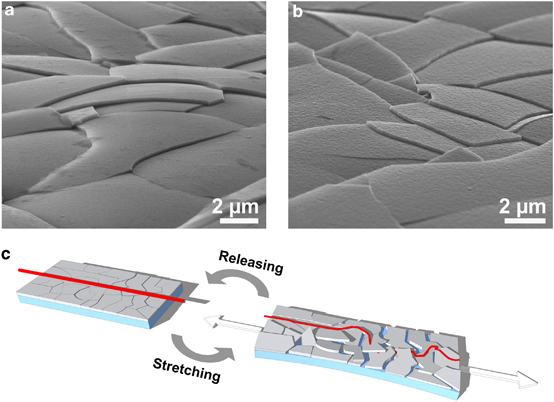Supple circuits to power flexible future
 Researchers at RMIT have made progress on a remarkable new material that is bendy, transparent, durable and shockingly – can conduct electricity.
Researchers at RMIT have made progress on a remarkable new material that is bendy, transparent, durable and shockingly – can conduct electricity.
The material has a range of applications, mostly under the category of ‘devices people always manage to break’.
A bouncing mobile phone, a roll-up tablet PC, and circuitry that moves freely may all be possible with RMIT’s new method to transfer electronics with versatile functionality onto a flexible surface.
A report on the recent research into malleable machines has been published in Nature Publishing Group's Asia Materials, the leading materials science journal for the Asia-Pacific region.
At the moment; thin, transparent nanolayers of oxide materials are used to control the ability of micro and nano-electronic devices to sense, insulate or generate energy.
The brittle oxide materials operate at over 300 degrees and do not like being bent. The new technique makes them a lot more compliant.
Lead author, PhD researcher Philipp Gutruf, says: “The novel method we have developed overcomes the challenges of incorporating oxide materials in bendable electronic devices, paving the way for bendable consumer electronics and other exciting applications.”
“We have discovered a micro-tectonic effect, where microscale plates of oxide materials slide over each other, like geological plates, to relieve stress and retain electrical conductivity,” he said.
Supervisor and co-leader of the research group, Dr Madhu Bhaskaran, said the novel approach uses materials which are known to play nicely with the human body’s many native organs and organisms.
“The ability to combine any functional oxide with this biocompatible material creates the potential for biomedical devices to monitor or stimulate nerve cells and organs,” she said.
“This is in addition to the immediate potential for consumer electronics applications in flexible displays, solar cells, and energy harvesters.”
Full details of the research are available from the NPG Asia Materials journal.








 Print
Print